New To Straw Bale?
Start Here.
We’re So Glad You’re HereWelcome to your #1 resource for straw bale home construction. Start the free 16-day eCourse, read five essential guides, watch the full build series, then join a workshop or choose a starter plan.
16 Essential Steps to Straw Bale Success
The videos are absolutely the best thing I’ve found in the Straw bale building industry. Thanks again for all your hard work helping others with their Straw Bale Dreams.
David N.
You Can Do It
Start small, learn the skills, and count on our support at every step.Since 2004, we’ve written 500+ blog posts, had our FREE eCourse read by 50,000+ people, had 10,000+ watch our videos, and worked with numerous people with private consulting packages. 3000+ folks have attended strawbale.com workshops.
By interfacing with so many over the years, we’ve learned an undeniable truth: people of ALL ages and abilities, when given the proper instruction and support, are capable of building their own dream straw bale home.
So if you want to do it, but aren’t sure you can, you’ve arrived at the right place. ☺️
Explore Your Path Forward
Follow these simple steps to move from curious to confident in building with straw bales.Learn the basics: Free 16-day eCourse
Read what most people ask first: Six featured articles
Go deeper: Our eBook
Watch the full build: How to Build a Straw Bale Home video series
Get hands-on: Join a workshop
Pick a starting design: Small, starter, pre-defined house plans
Ready for a project: Schedule a consult
Find Inspiration: Photo Gallery
FREE 16-Day Straw eCourse
Learn How To Build Your Own Straw Bale House!Sign up to receive your FREE (and instant) subscription to our “16 Essential Steps to Straw Bale Success” eCourse. For over two weeks, you’ll receive a daily and information-packed lesson about straw bale construction in your inbox. Over 50,000 people have read it so far!
Plus, you’ll receive a 25% discount code on purchasing any of our On-Demand Learning Courses, eBooks, and Tool Schematics (downloadable).
p.s. We will never, ever sell, trade, or in any way give away your contact information to anyone else…that’s a promise. For more details, see our Privacy Policy.
Lesson List
Moisture Considerations
Baling Over Framed Floors
Plumbing
Electrical
Plastering Applications
and much more
Design
Choosing the Best Bales
Creating Custom Bales
Creating Niches
Prep Work For Plaster
Hanging Cabinets
Read Featured Articles
Learn from our most popular guides that answer the questions new and experienced builders ask most.Learn How to Build a Straw Bale Home
Get the complete guide with our ebook and full video series — everything you need from planning to finishing your build.eBook
Your complete step-by-step guide to building a comfortable, durable, and beautiful straw bale home.A Modern Look At Straw Bale Construction
covers the best details for a high-quality straw bale build in 214 pages (with over 100 color images).
PLUS Straw Bale Details, a 22-page booklet ($20 value), is included in your purchase for free.
Videos
Follow the entire build process from foundation to finish with clear, easy-to-follow videos.How To Straw Bale Building - Original Video Series
with Andrew Morrison as your instructor and produced by Gabriella Morrison. These are the classic step-by-step videos that have helped build so many bale homes!
Join A Workshop
Follow these simple steps to move from curious to confident in building with straw bales.Gain Hands-On Experience
Spend a week building on a real project, gain hands-on skills, and connect with others who share your passion for sustainable construction. Whether you are a first-time builder or a seasoned pro, you will leave ready to apply what you have learned.
When To Jump In
If hands-on learning fits you, our workshops are a great first step. The schedule drops on Black Friday, and early prices run for one week. 2025 is complete, so join the 2026 Workshop Waitlist to get updates and early access. For details, visit the Workshops page.
Starter House Plans
Begin with a small, proven design that is easy to build and adapt.Explore compact, efficient straw bale home plans perfect for first builds, guest houses, or phased projects. These designs minimize complexity while maximizing comfort and energy performance. Each plan includes floor plans and elevations.
Photo Gallery
Real homes. Real inspiration. See what’s possible with straw bale design.Frequently Asked Questions
Find answers to common questions about straw bale home building, costs, building techniques, insulation, and more.-
In general, yes. A straw bale wall is roughly three times as efficient as conventional framing. Over the life of a typical thirty-year mortgage, this superior insulation can reduce energy costs by up to 75%, saving money and vital natural resources.
As with any building, details and the quality of craftsmanship matters and heavily influences the energy efficiency of the structures’ performance.
-
No. Canadian and U.S. materials laboratories have found that: “The straw bale/mortar structure wall has proven to be exceptionally resistant to fire.”
In these tests, the flames took more than two hours to penetrate the plastered bale walls. Conventional framing built to commercial standards took only 30 minutes to one hour to burn.
Due to their tight compaction, bales contain very little oxygen and thus resist combustion. It’s like trying to burn a phone book.
Loose straw, however, is a fire risk and during construction loose straw should be cleaned from the job site daily. Straw bale walls should be plastered as quickly as possible in the construction process to provide their tested fire resistance performance levels.
-
Pests are more of an imagined concern than a real threat. Once the walls are properly plastered or sided, there is no way for bugs or rodents to get into the bales other than to gnaw through 1 1/2”s of plaster.
If pests were to get inside the straw bale walls, they would find it almost impossible to move in the densely packed bales.
Termites and other pests pose more of a problem to conventional construction than they do to straw bale structures.
Again, as with any type of home construction, craftsmanship and attention to detail matter for long-term performance!
-
Straw bale homes provide superior sound absorption compared with conventional houses. We hear this feedback all the time from owner-builders and straw bale home owners.
This can be especially important in the townhomes. The sound absorption between units will help create separation between common wall homes.
The ‘feel’ of a bale home is what you hear most about. Once inside, a deep breath is often inspired, a sense of peace and calm are common experiences. (Want to find a bale home to stay in? Check out our Find a Straw Bale Stay Near Me article for ideas.)
-
In load-bearing straw bale structures, the bales themselves carry the vertical loads. High-density bales and proper compression are a must to ensure the bales will not settle under the weight of the roof assembly.
In-fill wall system structures rely on the framing to carry the vertical loads. Lateral loads, or shear strength, are carried by the wall assembly as a whole.
The bales, the structural wire mesh, and the plaster all play a part in the handling of lateral loads. Recent engineering has shown bale wall assemblies to be structurally sound even in the most volatile earthquake zones of California.
-
There are a number of things to keep in mind when shopping for bales. Know the size you are designing to (two string, three string, etc…).
The straw should be golden in color. Darker straw is often an indication of water damage. Check the density of the bales. The bale should not deform dramatically when lifted by one string. Use a handheld moisture meter to check moisture content. Bales have to be below 20% MC for construction. Finally, check for uniform shape. If the bales are all shaped properly, the baling machine was most likely set well, producing consistent bales. Read all the details of these points in our Choosing Straw Bales For Construction and Find Suppliers here.
-
The best way to learn the art of straw bale construction is by taking a hands-on workshop. We offer 7-day hands-on workshops in several locations each year. These events are not only highly instructional, they are also extremely fun and often a life changing experience for those in attendance. You can find the list of current workshops here. We cover all aspects of straw bale construction, from foundation tips to plastering and everything in between.
If you cannot take time off work and attend, consider purchasing one of our instructional on-demand courses, or joining us at one of our virtually held Workshops (announced periodically and held when our hands-on workshop travel schedule allows!)
Finally, stay informed. The field of Straw Bale construction changes rapidly. To stay up to date make sure you are subscribed to our free community Straw eNews — we always share the best with our community first!
-
Yes! It is a good idea to know the size of the bales you intend to use before you start designing. That way, you can keep the modular unit of the bale in mind when laying out the plan.
Bales take up more floor space than conventional walls, so use them to your advantage. Use window seats, wall cutouts, and flush mount cabinetry to increase the usable space within the walls themselves.
Check our free articles on designing with straw bales. And, have a look at our straw bale house stock plans to get a better idea of some of the differences.
If you are interested in learning more, we offer a Straw Bale Home Design workshop — email us at info@strawbale.com to get on the waitlist.
-
This takes experience. You might want to build a small structure yourself, start to finish, like the one shown in our straw bale Starter Project Package. The techniques described in the videos will help you fully understand the subcontractor's needs.
Scheduling is a little different from conventional homes because including bales affects the installation of rough wiring and plumbing.
You can use our consultation services to help bridge any gaps in the sub’s installation experience specific to bales. Or, we can teach you the ins and outs to speak with subcontractors to help them bridge the gap. This is a common topic at workshops.
-
Moisture concerns can be handled with proper design and construction methods. So long as the bales are installed when dry (moisture content of 14% or less) and are properly sealed within the plaster and protected from water infiltration, they will perform well.
The adopted International Residential Code, Straw Bale Structures Appendix, has standards in place to accommodate this design and type of construction.
Even if a building is heavily rained on, it will be fine as long as it is allowed to dry out. Problems arise when high moisture levels above 20%) are sustained for long periods of time.
-
Organic material requires both oxygen and water to decompose. With proper construction techniques, water will not enter the building, thus making decomposition impossible.
Rice straw, in particular, has a high silica content, which increases its resistance to decay. Straw has been used as an insulating material for many centuries and has even been found in excellent condition in Egyptian tombs thousands of years old. Straw will not decompose as long as its moisture content is kept low.
-
Bale walls do not breathe in the sense of allowing air to move through the walls. In fact, it is a good idea to limit air infiltration into the walls as air carries moisture.
When we say they breathe, we are referring to the movement of moisture through and out of the walls. It is critical that moisture moves out of the walls.
Permeable plasters such as lime or earth should be used in wet or humid climates, and Cement-based plasters should only be used in dry climates, if at all.
This moisture transfer improves indoor air quality without sacrificing energy efficiency and keeps the bales dry. Straw is a natural material, and as such, it does not off-gas the way conventional insulations do, adding to the health of the home and its occupants.
-
The thick, pliable bales actually improve design options. Creative nooks and window seats are standard in straw bale construction. Built-in furniture, curved walls, landscape features, and sound barriers are all easily accomplished with bales.
-
Bale homes were built in the 1800s and still exist in Nebraska and Europe. Straw bale homes have consistently withstood severe weather and wind in Wyoming and major earthquakes in California.
Many architects and engineers consider straw bales to be the ideal “seismic-resistant” building material. In wind tests, bale structures see no movement in a sustained 75 mph gale and only 1/16 inch movement with 100 mph gusts.
-
The use of straw bales can have a huge impact on our natural resources and air pollution. Each year, the U.S. alone burns or disposes of 200 million tons of ‘waste straw,’ producing massive amounts of carbon dioxide.
Using straw as insulation reduces the need for initial energy outputs in manufacturing. There is less embodied energy in straw as it is available in almost every local market, reducing transportation costs and efforts. Straw is a renewable resource that has a one-year growth/harvest cycle.
Using this local, agricultural by-product as a building material, we reduce energy expenditures, the amount of straw burned, and the use of fossil fuels needed for material transportation.
-
When a quality plaster is used, most items can be hung directly on the plaster with conventional plaster screws and plugs. This is true for pictures, coat hangers, and other small items.
To hang larger items such as kitchen cabinets, backer boards must be installed into the bales before the plaster is applied. In the case of extremely heavy loads, a bolt can be threaded through the bales and fastened to an oversized washer on the opposite side of the wall.
-
In a perfect world, plumbing would be kept out of the bales entirely. Whenever possible, design a structure so that the plumbing can be run through the floor and interior stick frame walls. Check with your plumber about “wet venting” plumbing fixtures so the vents can run through the floor to the interior walls.
When it is not possible to keep plumbing out of the bales, you can either build a faux wall in front of the bales in which to run the plumbing, or you can place the plumbing in a continuous sleeve that will contain any leaks or sweaty pipes.
-
Although Romex is allowed by many codes for straw bale construction, most building inspectors want to see direct burial cable (UF-B) in the walls when a sheathed wiring is employed. It is important to hold the wires back from the face of the bales so they are not damaged during the construction or post-construction process.
If wire upgrades are possible in the future, or if additional circuits may someday be added, it is a good idea to use chases. If, at a later date, you decide to upgrade the system, you can simply pull new wires through the conduit or fish wires into the chase to the desired location.
To reduce the effects of electrical magnetic fields (EMFs) use metal cased, twisted wire. The twist in the wire along with the metal conduit reduces the emission ofEMFs.

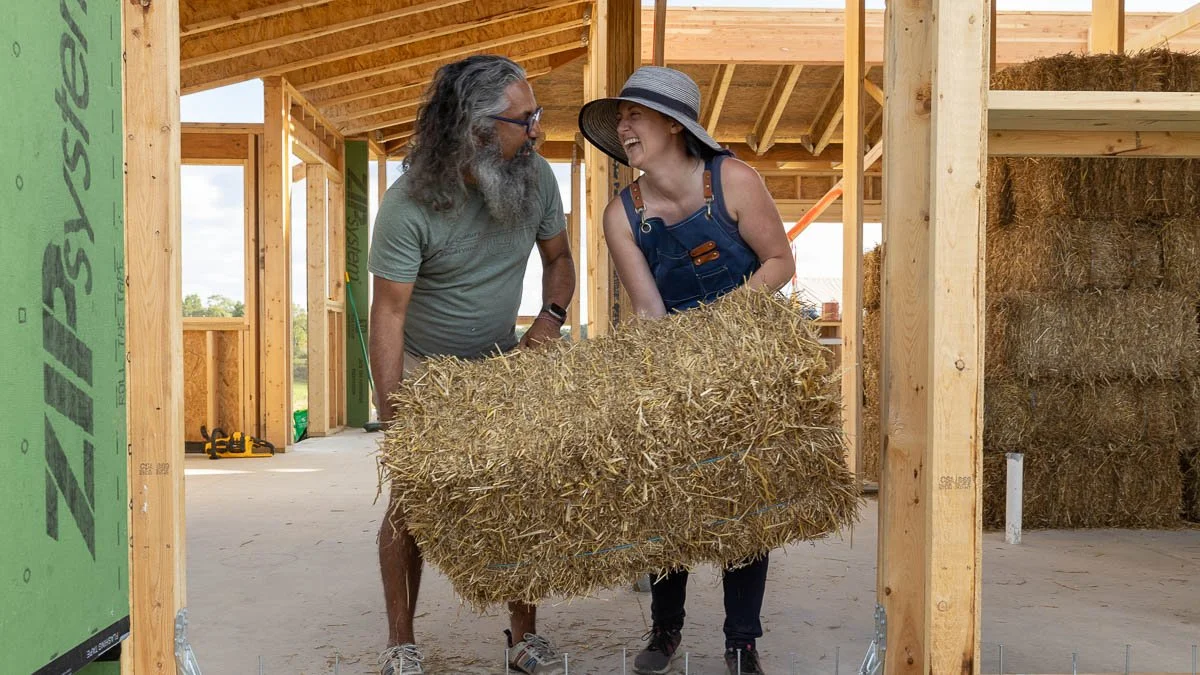

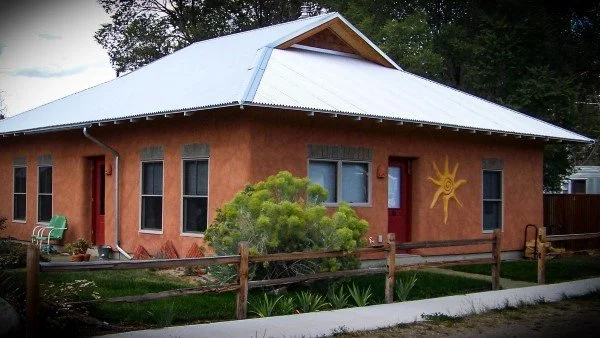



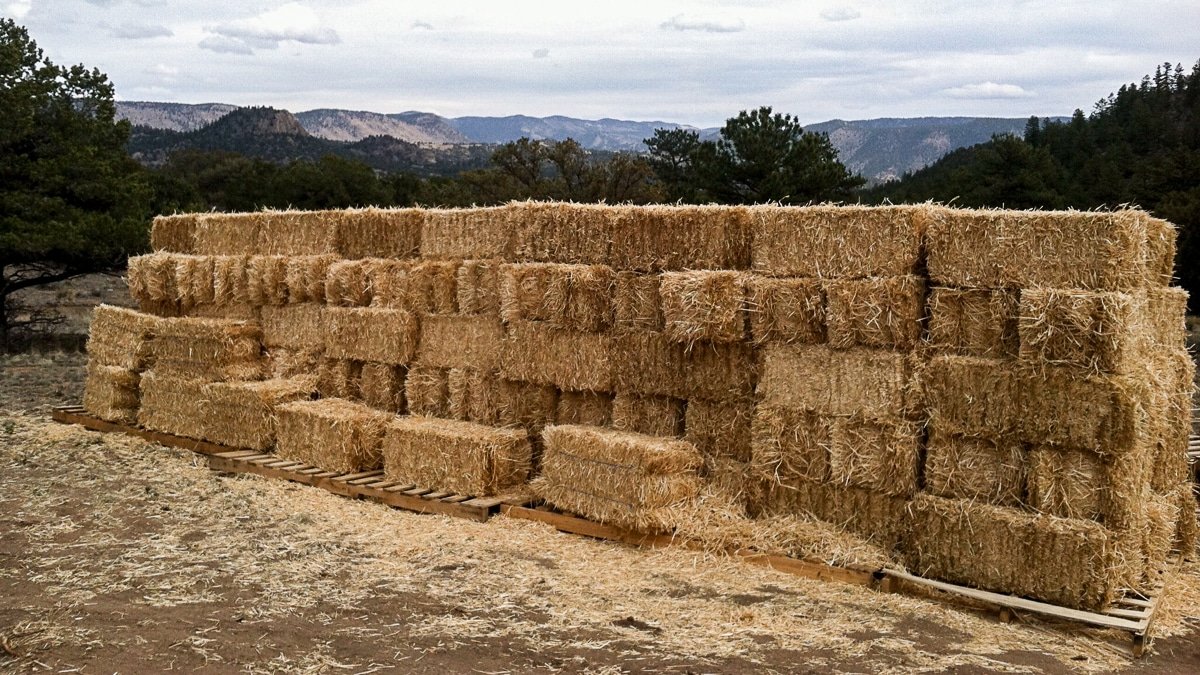

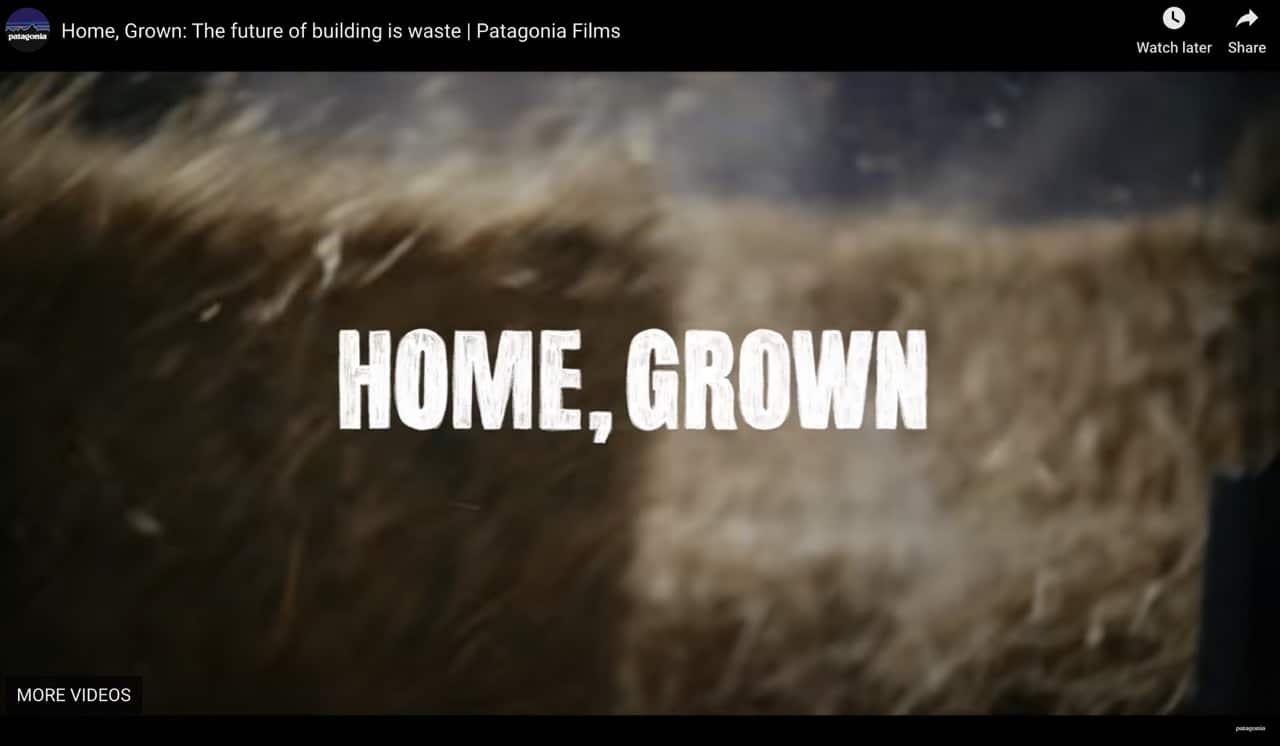
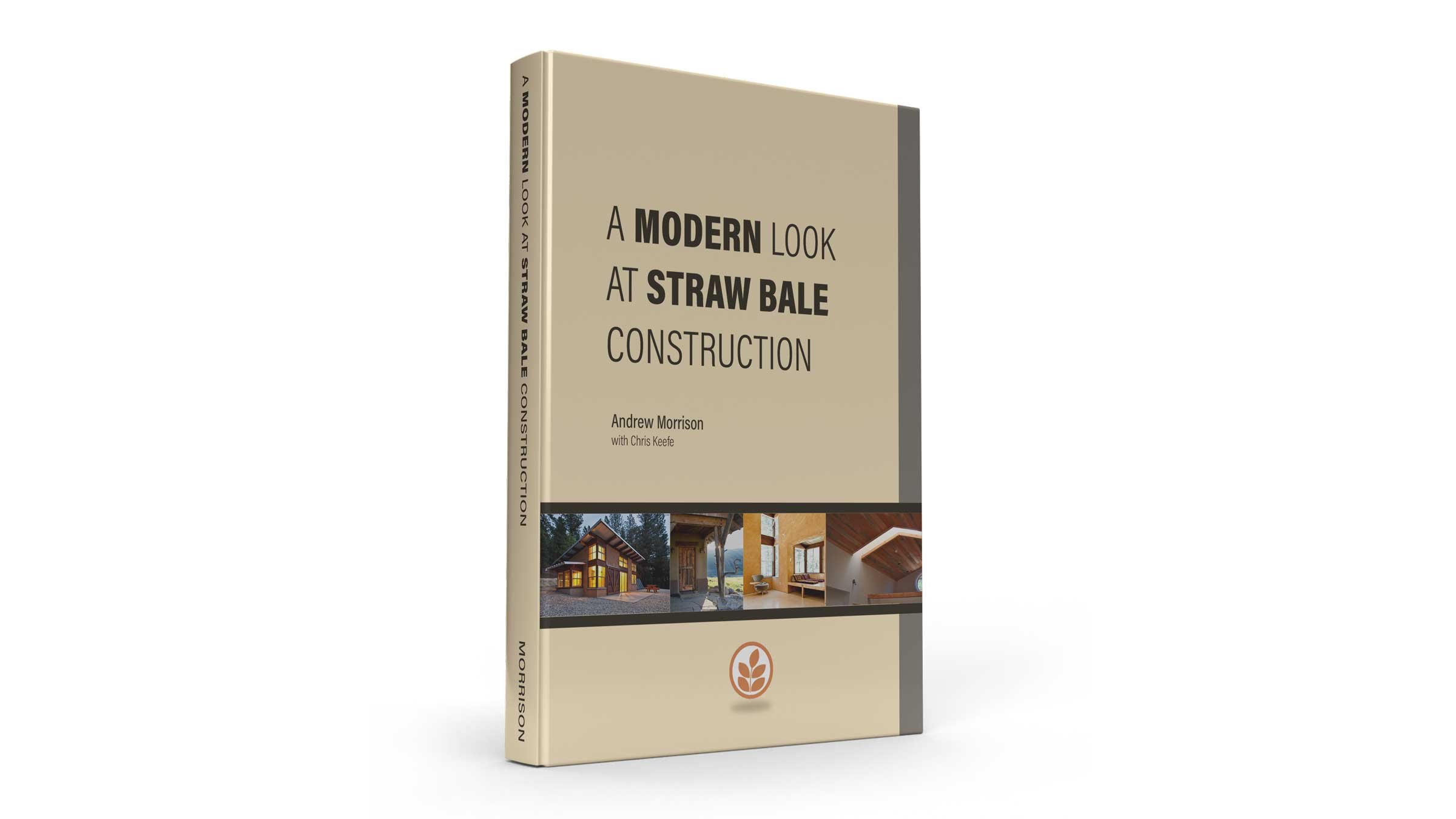








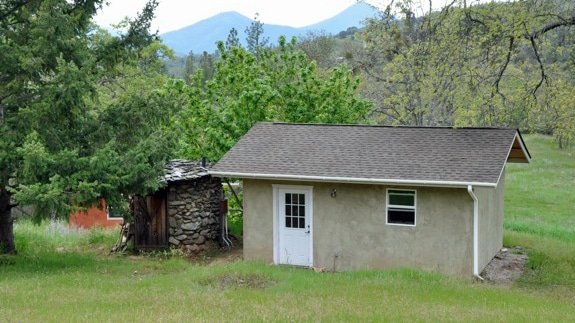

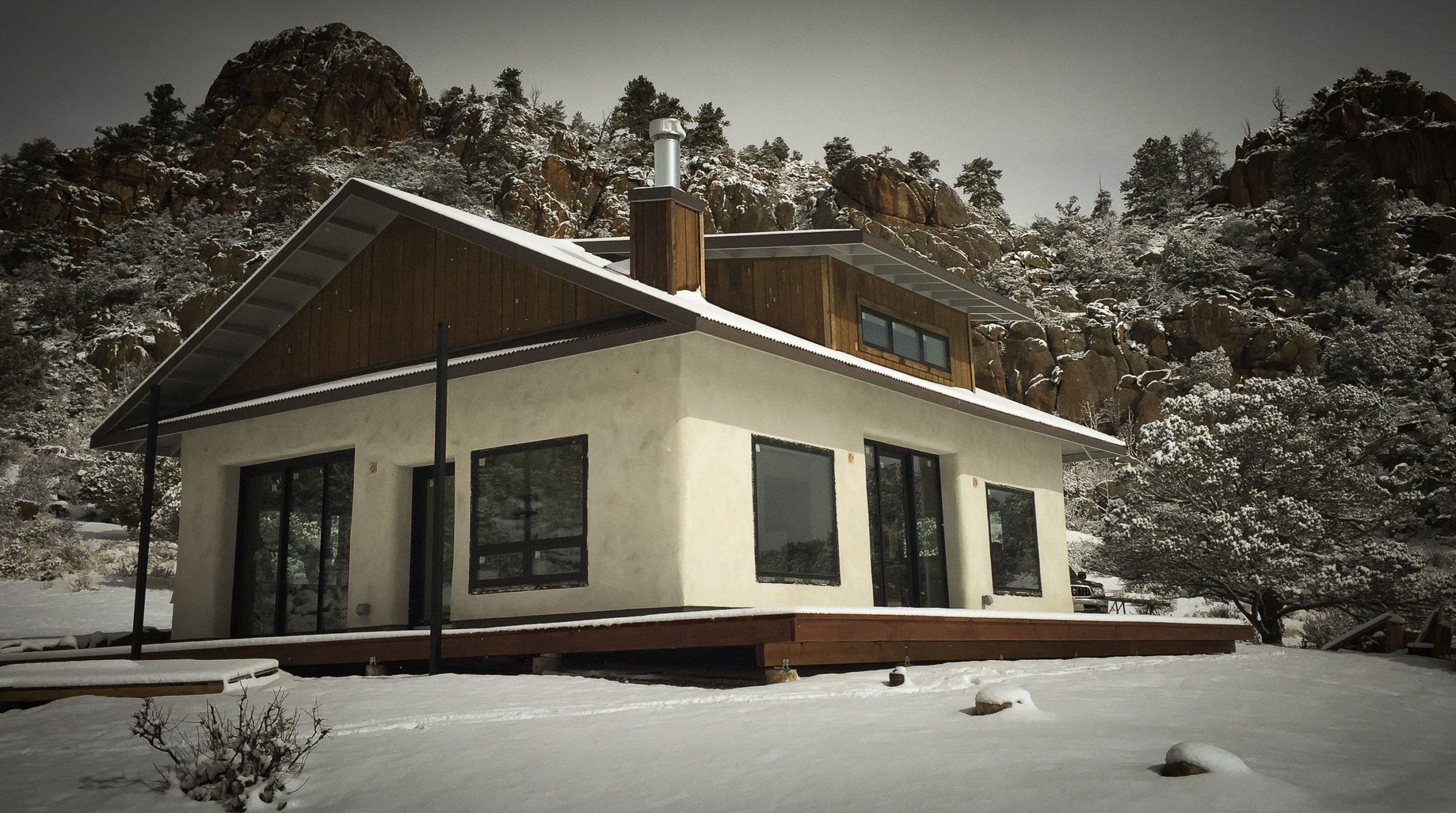


Water damage is the worst enemy of bale construction and is protected against it with the utmost attention. There are several ways to deal with water issues…